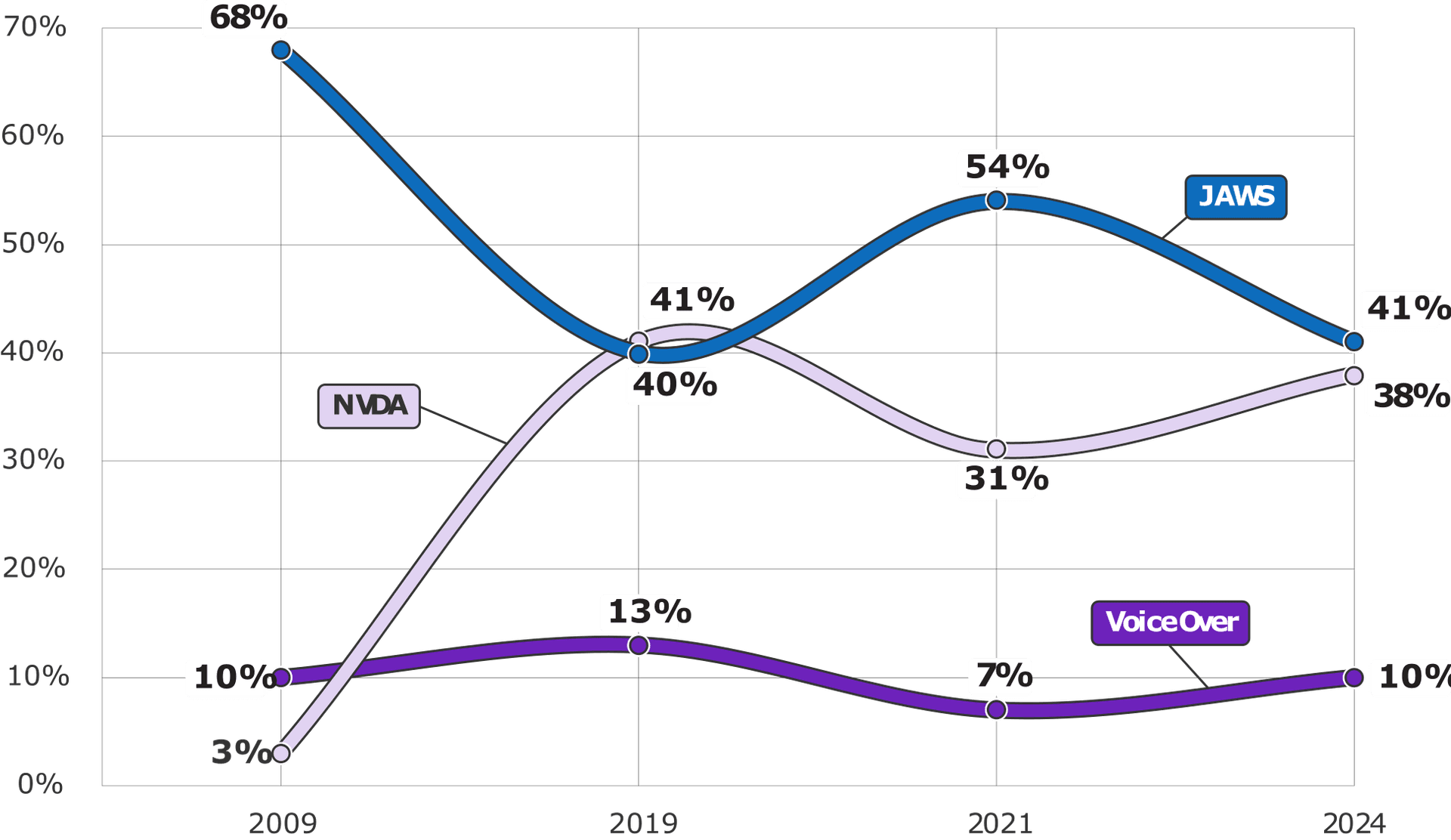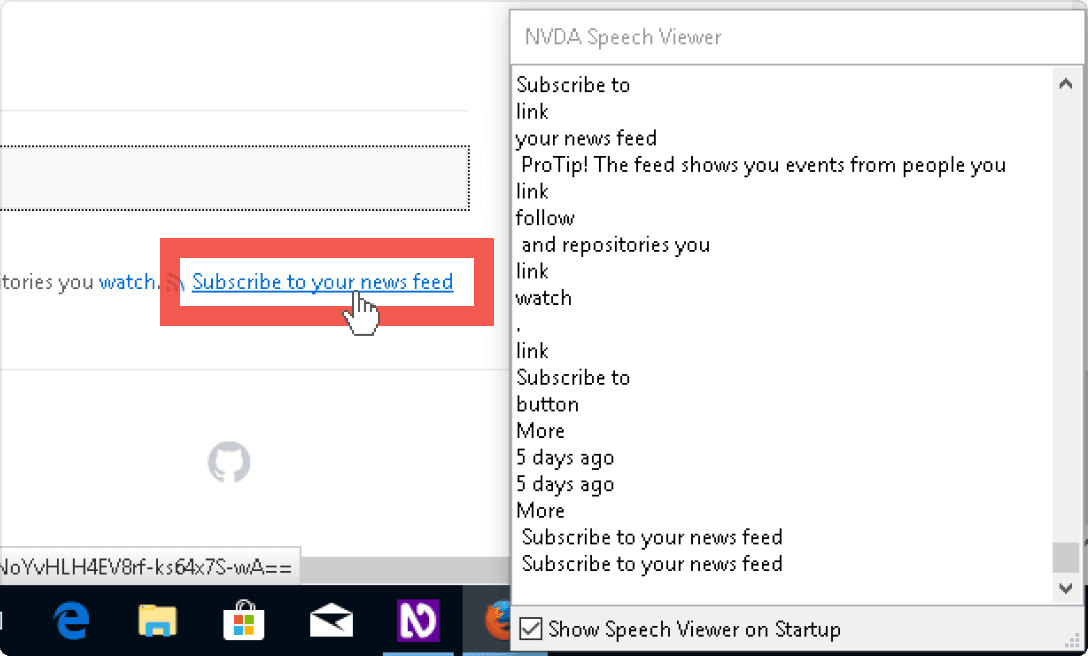Assistive technologyScreen readersNVDA Screen Reader

By: NV Access
Website: nvaccess.org
Pricing: free, donations
Bug tracker: github.com/nvaccess/nvda/issues
NVDA Screen Reader
Related resources:
- Overview (current)
- Testing
NVDA is a free, open source screen reader available for Windows. It’s a mature screen reader that’s been in development since 2006. The non-profit NV Access sets the roadmap and future of NVDA, which releases new features and versions every few months. Donations are a great way to support the project.
Popularity

As of WebAIM’s most recent screen reader survey, released in 2021, NVDA is the community’s second most popular choice, surpassed only by JAWS (in the 2019 survey, NVDA was #1). Globally, NVDA has over 100,000 users.
Features
NVDA has robust support for browsing the web using Mozilla Firefox and Google Chrome, the Microsoft Office suite, and built-in Windows apps. The speech synthesizer supports over 50 languages as well as 3rd party synths. It can run on secure Windows screens, like logon, and has a rich set of customizable preferences. Refreshable braille displays and keyboard are supported over USB.
There’s also a rich community of NVDA plugins or scripts, which can add features and provide custom-tailored support for different apps, like Notepad++ and Zoom.
Accessibility Testing

When evaluating the accessibility of a website or app via manual testing, NVDA is an extremely popular choice. It’s been called “the most bang for your buck” by accessibility consultancies because it tends to uncover 90% of screen reader compatibility issues on its own.
For example, consider a common HTML bug where an <input> is missing a label or accessible name:
<label>What's your favorite animal?</label><input id="id-of-input" />
Because the <input> is missing a for="id-of-input" attribute, when the input is focused with NVDA the "What's your favorite animal?" label is not announced, forcing the user to guess at the input’s purpose.
However, some screen readers will make an educated guess that the label was meant for the input in the interest of creating a better user experience. JAWS + Chrome will announce the label when the input is focused, which can create a false impression that the HTML is bug free.
The NVDA speech viewer provides a running log for testers who need captions and is also useful for bug reports (caveat: be careful relying on speech viewers). It also supports visible focus highlighting for the virtual cursor and document focus.
The modern Windows accessibility API, UIA, is supported as well as legacy MSAA and IA2.
Getting Started
If you’re on a Windows PC, you can download NVDA for free and run the installer, which provides both audio and visual feedback. If you’re looking to test with NVDA, but are on a Mac or running Linux, Assistiv Labs provides remote access. NVDA can also be installed on a Windows virtual machine, just be aware that keyboard shortcuts may need to be remapped and an audio driver may require special configuration.
Alternatives
Other popular Windows screen readers include: